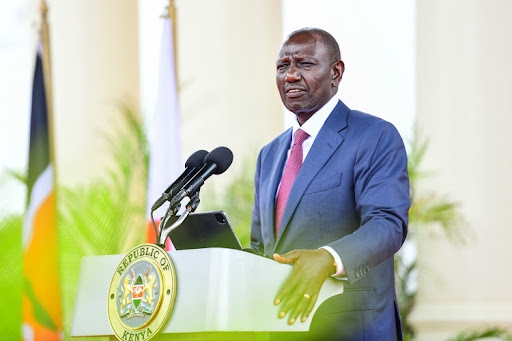Human activities, particularly emissions of heat-trapping greenhouse gases have increased temperatures by 2℃ in some parts of Kenya, a new report has shown.
This is way above the global average of 1.1℃.
The report released on Thursday by the African Venture Philanthropy Alliance (AVPA), said the situation has caused drying out of soils and accelerated the growth of pests and the spread of diseases, hurting food production.
The report’s authors, who polled 2,000 Kenyans, reported that agriculture, health and infrastructure were the most affected sectors by climate change.
"Land degradation is reducing water retention and water supplies, while heat spikes are damaging roads, and increasing human heat stress and air pollution,'' the report reads in part.
The ongoing temperature analysis led by scientists at NASA’s Goddard Institute for Space Studies, says that the average global temperature on Earth has increased by at least 1.1° since 1880.
The majority of the warming has occurred since 1975, at a rate of roughly 0.15 to 0.20°C per decade.
At least 80 per cent of those surveyed in Kenya cited drought as the top climate change in their day-to-day life.
This was followed by changing rain patterns at 77 per cent and rising temperatures at 63 per cent.
In 2017, an analysis of meteorological data for Kakamega and Siaya counties found temperatures had risen by around 2°C since 1901.
World Bank shows the country’s average temperatures from 1991 to 2020 were 1.5° higher than from 1901 to 1930.
Kenya’s temperatures are forecast to rise by a further 1.5C° to 2.5C° by 2050, making for a total rise of up to 4°C, which will threaten the existence of human life across many parts of the country.
To curb further global warming, the report has identified high-impact technologies to limit these impacts, including low-cost nets capturing permanent free water supplies from the air and new soil additives that retain long-term soil moisture.
Others are road surfaces made from recycled plastic wastes that stop roads from breaking up, and paints and surfaces that reduce heat in homes, urban heat islands, and air pollution.
The report is coming at the time the world is planning to assemble in Dubai for the 2023 United Nations Climate Change Conference (COP28) next month to find solutions to rapid global warming.
In May, United Nations said extreme weather has caused the deaths of two million people and $4.3 trillion (Sh645 trillion) or five per cent of the global GDP in economic damage over the past half a century.
According to the UN’s World Meteorological Organisation, 11,778 weather-related disasters have occurred from 1970 to 2021, and they have surged over that period.
The world is fighting to keep global warming below 1.5°C and zero emissions of green gasses by 2030.
To realise this, emissions in advanced economies need to fall by 80 per cent from 2022 levels and by 60 per cent in emerging economies by 2035.
A one-degree global change is significant because it takes a vast amount of heat to warm all of the oceans, the atmosphere, and the land masses by that much.
In the past, a one to two-degree drop was all it took to plunge the Earth into the Little Ice Age.
A five-degree drop was enough to bury a large part of North America under a towering mass of ice 20,000 years ago.
Researchers also analysed the support available to Kenyan climate entrepreneurs, finding a rich entrepreneurial investment ecosystem in place, but little focus on climate adaptation initiatives, with investments dominated by digital and emission-reduction businesses.
This limited climate protection investment, has prompted the launch of a new Africa Climate Investment Forum to create a climate adaptation investment ecosystem through investor co-creation, knowledge sharing, and immersion programmes.
“Our aim is to equip investors to draw on new impact assessment models and expanded financial tools to fund entrepreneurial climate change businesses,” AVPA CEO Frank Aswani said.
He said the emphasis on carbon-reducing climate emission besides a relative neglect of life-protecting climate adaptation has become a North versus South point of tension.
This has sparked disputes at COP26 and COP27, and now placing the need to ‘correct course’ on adaptation finance firmly onto the COP28 agenda.
The Climate Policy Initiative estimated in 2022 that Africa’s climate financing needs were running at $250 billion (Sh37.5 trillion) a year and East Africa’s at $82 billion (Sh12.3 trillion)
These figures dwarf the $100 billion (Sh15 trillion) a year pledged by developed nations in 2009 as a total climate investment flow into all the world’s developing nations, yet even that pledge has never yet been achieved.
Moreover, public funds are now under added pressure following the Covid 19 pandemic
Last year, Africa’s annual $277 billion (Sh41.5 trillion) climate finance needs dwarfed the world’s official donors’ total aid spending of $204 billion (Sh30.6 trillion).













